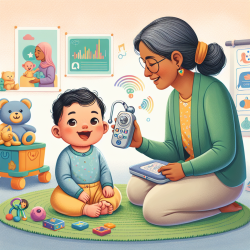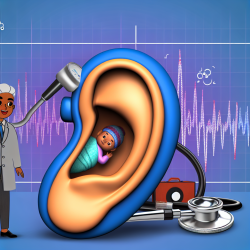The auditory brainstem response (ABR) is a critical tool in audiological screening for infants, particularly those at risk for hearing loss. Traditional ABR testing using air-conducted stimuli has limitations, especially in differentiating between sensorineural and conductive hearing losses. A recent study by Edward Y. Yang and Andrew Stuart, published in the Journal of Speech-Language Pathology and Audiology, explores the use of bone-conducted clicks in ABR testing to overcome these limitations.
Bone-conducted stimuli can provide valuable information about the cochlear reserve in neonates, which is crucial for identifying sensorineural hearing loss. This method involves the control and maintenance of bone-conducted signal delivery, which the study outlines in detail. The research included both normal and at-risk infants, with ABRs collected during the postnatal period and at four months of age. The findings suggest that this method could have significant implications for clinical practice.
Key Takeaways for Practitioners
- Improved Differentiation: Bone-conducted ABR testing helps distinguish between sensorineural and conductive hearing losses, which is a limitation of air-conducted ABR testing.
- Technical Control: The study details methods for controlling and maintaining the delivery of bone-conducted signals, ensuring accurate and reliable results.
- Clinical Implications: The described method could enhance the accuracy of early hearing assessments and improve outcomes for at-risk infants.
Steps to Implement Bone-Conducted ABR Testing
- Equipment Setup: Use a Nicolet Compact Auditory Evoked Potential System, bone vibrator (Radioear Model B-70B), and insert earphone (Nicolet Model TIP-300).
- Signal Calibration: Calibrate stimulus intensities relative to the average behavioral threshold of normal hearing adults.
- Bone Vibrator Placement: Secure the bone vibrator using a fabric elastic band with Velcro to maintain consistent coupling force.
- ABR Recording: Use gold-plated cup electrodes and ensure inter-electrode impedance is below 8000 ohms. Record and analyze EEG samples to identify ABR wave V peaks.
- Follow-Up Testing: Conduct follow-up tests to validate initial findings and ensure the accuracy of hearing assessments.
By adopting these steps, practitioners can enhance their ability to accurately diagnose and differentiate between types of hearing loss in infants. This method provides a more comprehensive understanding of an infant's hearing capabilities and can lead to more targeted interventions.
For practitioners interested in further research, the study also highlights areas that require additional investigation, such as the variability associated with repeated measures of ABR testing using bone-conducted stimuli and the development of clinic-specific ABR norms for different age levels.
To read the original research paper, please follow this link: A Method of Auditory Brainstem Response Testing of Infants Using Done-Conducted Clicks / Mthode d'valuation de la rponse voque du tronc crbel d'enfants l'aide de clics par conduction osseuse.










